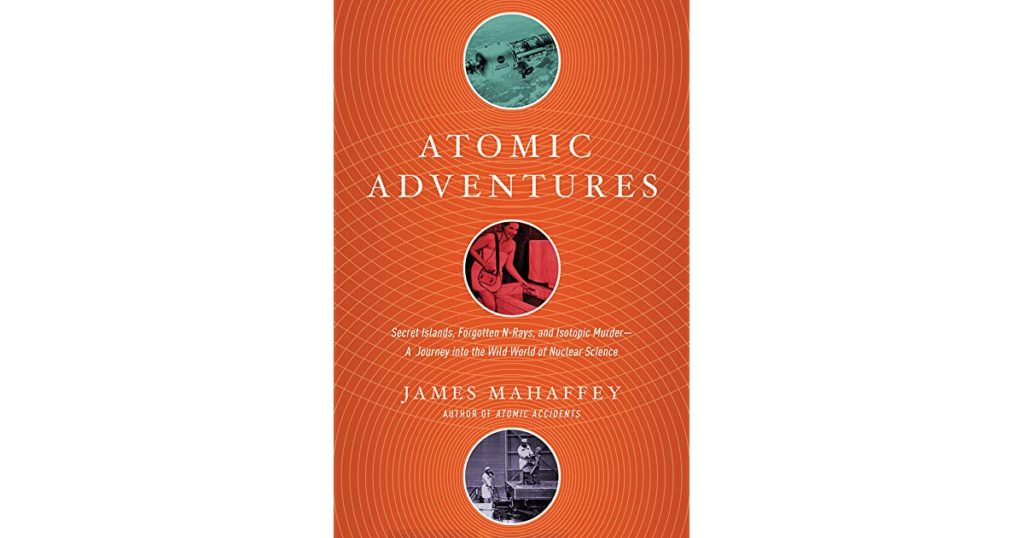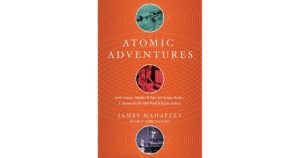
Book Recommendations for Former Energy Workers
Many of you have lived through the Manhattan Project or another key event that led nuclear energy to where it is today. There are many books out there that may interest you on the subject, so we have pulled together a few that you can read at the click of a button!
Power to Save the World: The Truth About Nuclear Energy
An informed look at the myths and fears surrounding nuclear energy, and a practical, politically realistic solution to global warming and our energy needs. Faced by the world’s oil shortages and curious about alternative energy sources, Gwyneth Cravens skeptically sets out to find the truth about nuclear energy. Her conclusion: it is a totally viable and practical solution to global warming. In the end, we see that if we are to care for subsequent generations, embracing nuclear energy is an ethical imperative.
Atomic Awakening: A New Look At The History And Future Of Nuclear Power
The American public’s introduction to nuclear technology was manifested in destruction and death. With Hiroshima and the Cold War still ringing in our ears, our perception of all things nuclear is seen through the lens of weapons development. Nuclear power is full of mind-bending theories, deep secrets, and the misdirection of public consciousness, some deliberate, some accidental. The result of this fixation on bombs and fallout is that the development of a non-polluting, renewable energy source stands frozen in time.
Outlining nuclear energy’s discovery and applications throughout history, Mahaffey’s brilliant and accessible book is essential to understanding the astounding phenomenon of nuclear power in an age where renewable energy and climate change have become the defining concerns of the twenty-first century.
 The latest investigation from acclaimed nuclear engineer and author James Mahaffey unearths forgotten nuclear endeavors throughout history that were sometimes hair-brained, often risky, and always fascinating.
The latest investigation from acclaimed nuclear engineer and author James Mahaffey unearths forgotten nuclear endeavors throughout history that were sometimes hair-brained, often risky, and always fascinating.
Whether you are a scientist or a poet, pro-nuclear energy or staunch opponent, conspiracy theorist or pragmatist, James Mahaffey’s books have served to open up the world of nuclear science like never before. With clear explanations of some of the most complex scientific endeavors in history, Mahaffey’s new book looks back at the atom’s wild, secretive past and then toward its potentially bright future.
Mahaffey unearths lost reactors on far flung Pacific islands and trees that were exposed to active fission that changed gender or bloomed in the dead of winter. He explains why we have nuclear submarines but not nuclear aircraft and why cold fusion doesn’t exist. And who knew that radiation counting was once a fashionable trend? Though parts of the nuclear history might seem like a fiction mash-up, where cowboys somehow got a hold of a reactor, Mahaffey’s vivid prose holds the reader in thrall of the infections energy of scientific curiosity and ingenuity that may one day hold the key to solving our energy crisis or sending us to Mars.
Weapons of Mass Destruction: Specters of the Nuclear Age
The Nuclear Age properly began with the discovery of the nucleus by Ernest Rutherford in 1911, but its impact on civilization began with the use of atomic bombs against Japan in WWII. The development of atomic bombs forever changed the world. From having a single bomb immediately after the Nagasaki attack, the United States would go on to build some 70,000 nuclear bombs over the course of the Cold War. The colossal brinkmanship with the Soviet Union threatened each country’s people. Why were so many bombs thought to be necessary? How did the infrastructure come about to enable the delicate business of building and deploying so many bombs? This book answers these questions and more; through high quality photographs the full flowering of the warheads and delivery systems of the nuclear age are shown in chilling detail.
The creation of the atomic bomb during World War II, codenamed the Manhattan Project, was one of the most significant and clandestine scientific undertakings of the 20th century. It forever changed the nature of war and cast a shadow over civilization. Born out of a small research program that began in 1939, the Manhattan Project would eventually employ nearly 600,000 people and cost about $2 billon ($28.5 billion in 2020) — all while operating under a shroud of complete secrecy.
On the 75th anniversary of this profoundly crucial moment in history, this newest edition of The Manhattan Project is updated with writings and reflections from the past decade and a half. This groundbreaking collection of essays, articles, documents, and excerpts from histories, biographies, plays, novels, letters, and oral histories remains the most comprehensive collection of primary source material of the atomic bomb.